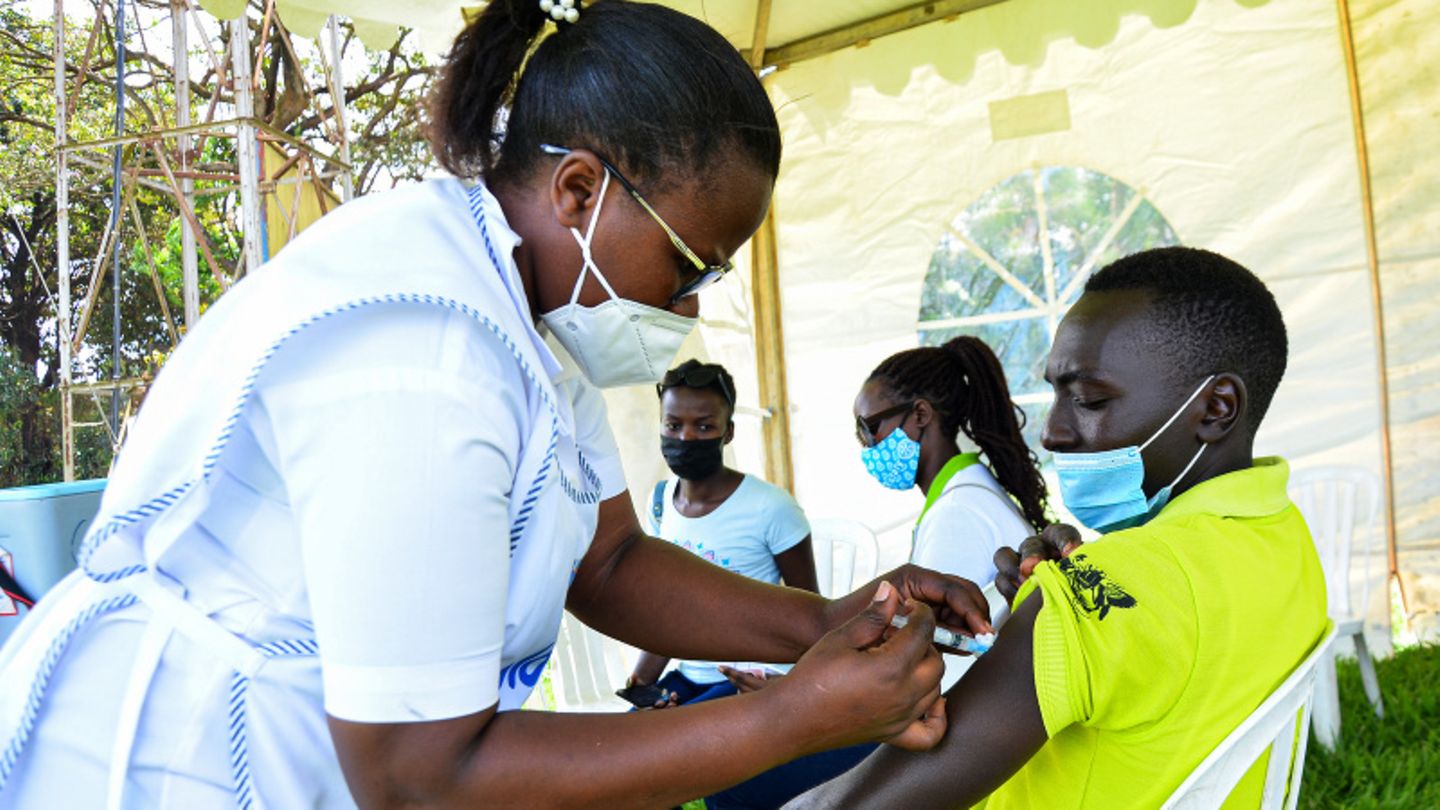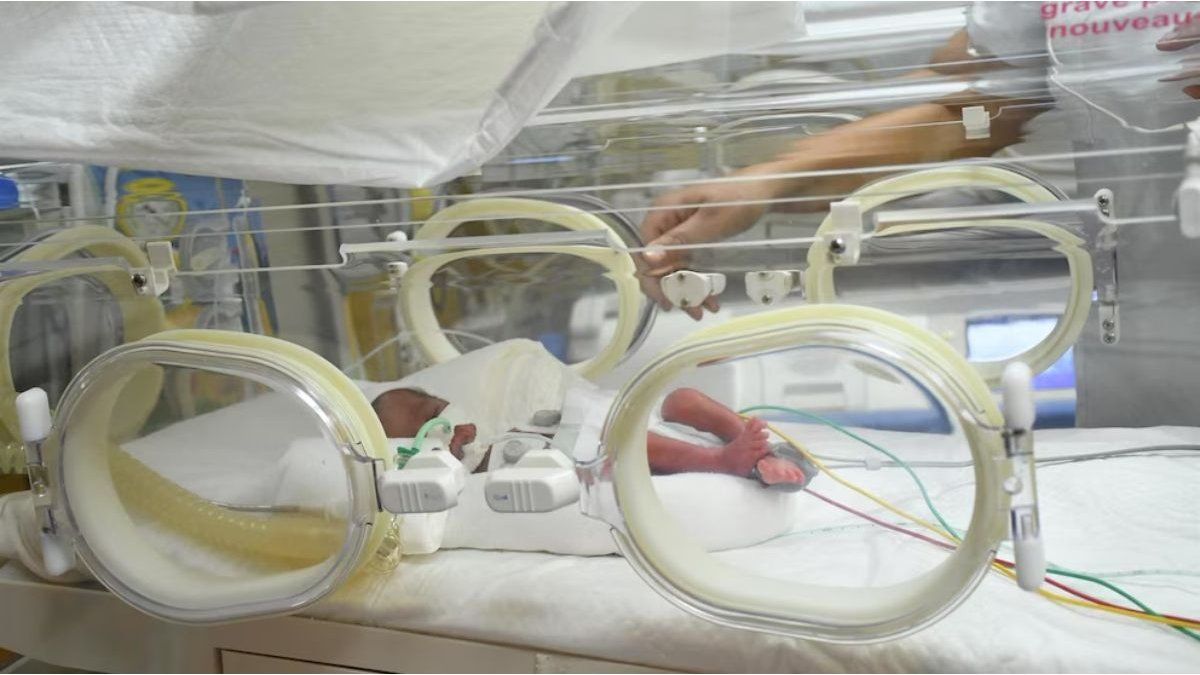According to a WHO analysis, the number of infections in Africa could be almost 100 times higher than previously thought. There is no end in sight to the pandemic. One reason for this is either insufficient vaccination capacity or a lack of vaccine.
While the pros and cons of a fourth corona vaccination are being debated in Germany and compulsory vaccination has failed in the Bundestag, African countries are still facing far more fundamental problems in the third year of the pandemic.
According to US data, more than 11.5 million infections have been reported on the continent so far – more than 250,000 have been fatal. In fact, the virus could have been far more devastating in Africa.
According to a WHO, significantly more people in Africa have been infected with the corona virus than previously assumed. As Matshidiso Moeti, WHO Regional Director, announced on Thursday, more than two-thirds of the population could now have been infected. However, the official case numbers do not reflect the true infection process: According to an as yet unpublished WHO study, the actual numbers are probably 97 times higher than the cases registered by the health authorities. But this also means that the majority of people could have some immunity to the virus.
Corona vaccine: supply exceeds demand
According to the African disease control agency (Africa CDC), around 500 million vaccine doses have been administered so far, and almost 16 percent of the population have received full vaccination protection. Only 1.3 percent of all Africans are boosted. The vaccination rate fluctuates extremely on the continent: while in Egypt almost every third inhabitant has been vaccinated twice, in the Democratic Republic of the Congo not even one percent of the population is fully protected.
Many African countries had previously complained, quite rightly, that they were being left behind in vaccine distribution. Although vaccines were diligently sent to Africa last year, it was only about filling and packaging. In the end, the vaccine ended up back in the countries that paid for the prioritization (the star reported).
Expectations were correspondingly high when the global corona vaccination initiative Covax ramped up the eagerly awaited deliveries. However, the hope of rapid immunization of the population turned out to be a moderate disappointment. The reason: there are now enough vaccines, but they don’t always end up with the people.
According to a report by the news portal, “” the rate is also increasing thanks to increasing mass vaccinations. After Unicef and WHO sent support teams, 62 million doses were administered in February alone. However, according to Africa CDC, a third of the available vaccine appears to be waiting in vain to be used in early April. The supply exceeds the demand.
According to a report by The Economist, some African nations are no longer protesting the supply shortage, but rather complaining that they are drowning in the vaccine. In February, the Africa CDC even asked suppliers to stagger vaccine exports to Africa. In addition to the lack of logistics, the overwhelmed health authorities, Biontech, Moderna and Ko are to blame. couldn’t vaccinate as fast as it would get in. The example of the Democratic Republic of the Congo is abstruse: In the Central African country there is only a vaccine available for five percent of the population. Just 16 percent of this supply has been used up.
You can also see a city-country divide. As the “Economist” reports, citing the non-governmental organization “Amref Health Africa”, this also has logistical reasons. For example, there are not enough freezers in rural areas to store vaccines properly. A major problem, however, continues to be the lack of public education.
Corona in Africa: second-class problem?
Judging by the sheer numbers, Corona should have had devastating consequences on the African continent, especially in the poorest regions. But apparently the opposite is the case.
As the “New York Times” reported at the end of March, the goal set by the African Union of vaccinating 70 percent of the population against Covid by the end of this year is now being hotly debated. For some governments, the virus is simply not the most pressing problem, as the intensive care units are mainly filled with malaria patients. In comparatively wealthy South Africa, many people have fallen victim to the virus. On the rest of the continent, however, the number of deaths remained consistently low.
According to the US newspaper, some experts believe that this is due to the young population. On average, Africans are 19 years old, while Europeans are 43 years old. The risk group is correspondingly small here. In addition, corona infections in young people are often asymptomatic – which is why they do not even appear in the statistics. High temperatures, low population densities and the fact that public life takes place outdoors are also considered possible causes of the low number of cases. But in the end it’s all just speculation.
Remember: If US President Joe Biden has his way, the corona pandemic will finally be history at the end of this year. He demanded in September 2021 that 70 percent of the world’s population should then be fully vaccinated. However, as the past few years have shown, goals are only realistic if there are concrete solutions. And they are once again missing in Africa. So it remains an unequal protection for all.
Other sources: “”; “”; “”; AFP
Source: Stern




